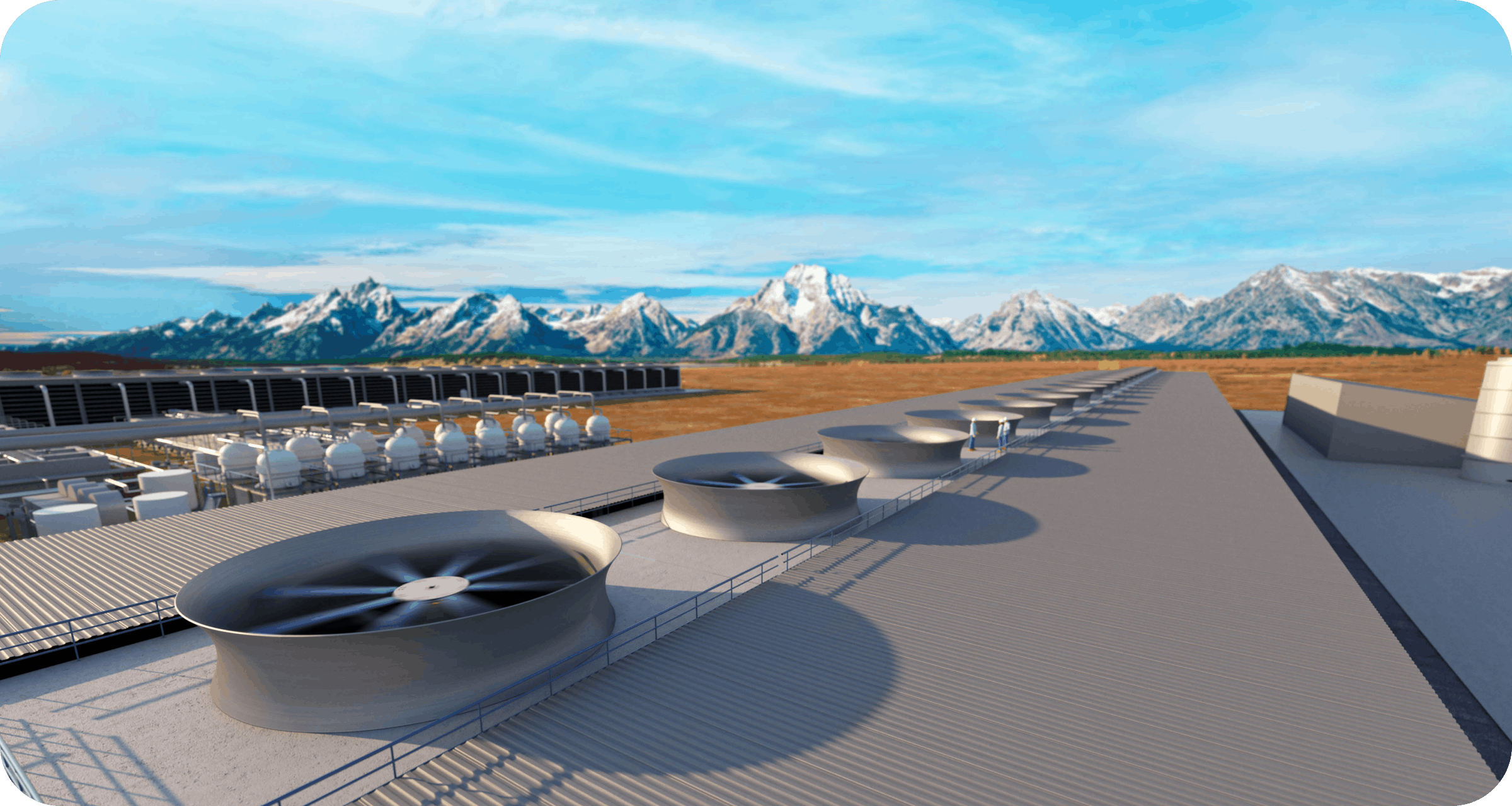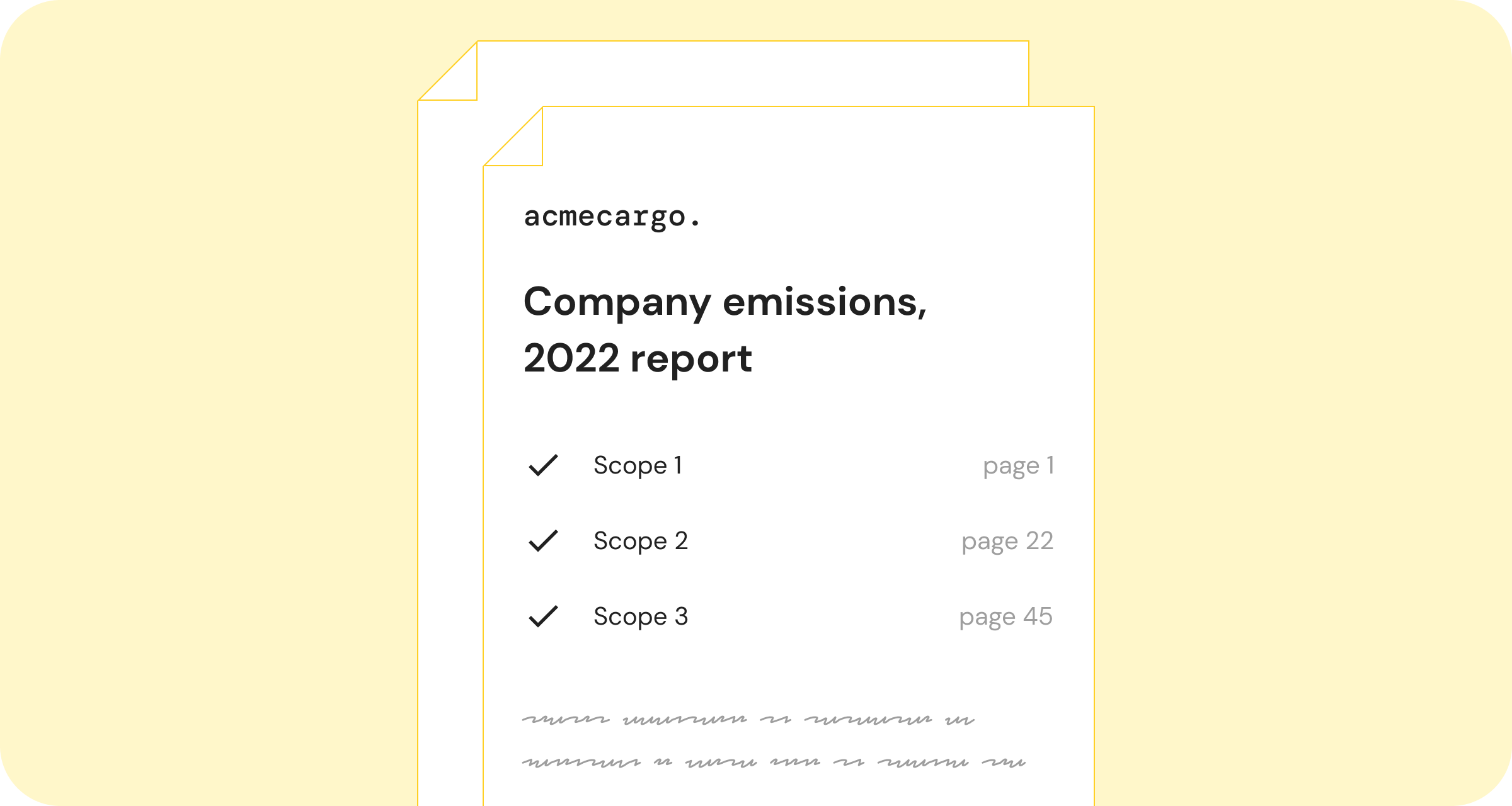
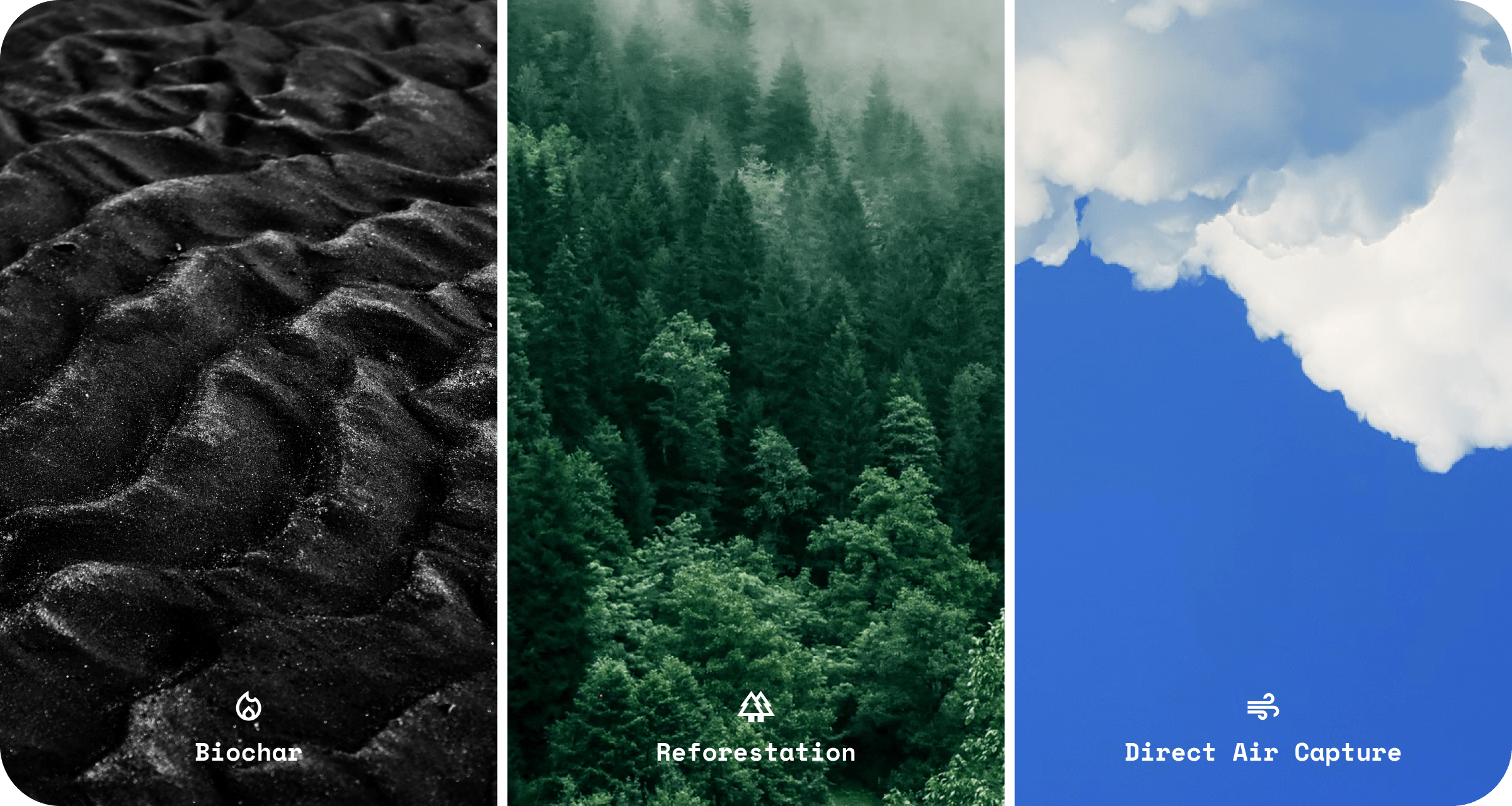
There are lots of different types of carbon offset projects out there – some types well known and others not so much.
Navigating these different projects as a carbon buyer can be overwhelming. How do you know which you should choose for your own offsetting? Are some better than others? How can you tell the good from the bad?
Well, the first step is to understand what the different projects actually do.
Before we get started, a quick reminder of what a carbon offset project is…
Carbon offset projects are designed with the purpose of either avoiding emissions taking place or removing existing carbon from the atmosphere. They use the sale of carbon credits as a mechanism to finance the project: a number of carbon credits is issued equivalent to the amount of carbon the project avoids or removes (1 carbon credit = 1 tCO2 avoided or removed), and these carbon credits are then purchased by individuals or businesses who want to offset their own emissions.
And for a little context, in this post we’ll split projects up into two broad types:
- Nature based solutions
- Engineered or technological solutions
And within each project type we’ll also give ‘categories’ for projects based on the types given in the Oxford Offsetting Principles – a framework for maximising the impact of carbon offsetting. The types categorise offset projects based on two key criteria which help us identify how permanent the carbon benefits a project produced are, and what the risk of them being reversed are:
- Does the project result in avoided emissions or carbon removal?
- Is carbon stored? If so, is it for the short-term or the long-term?
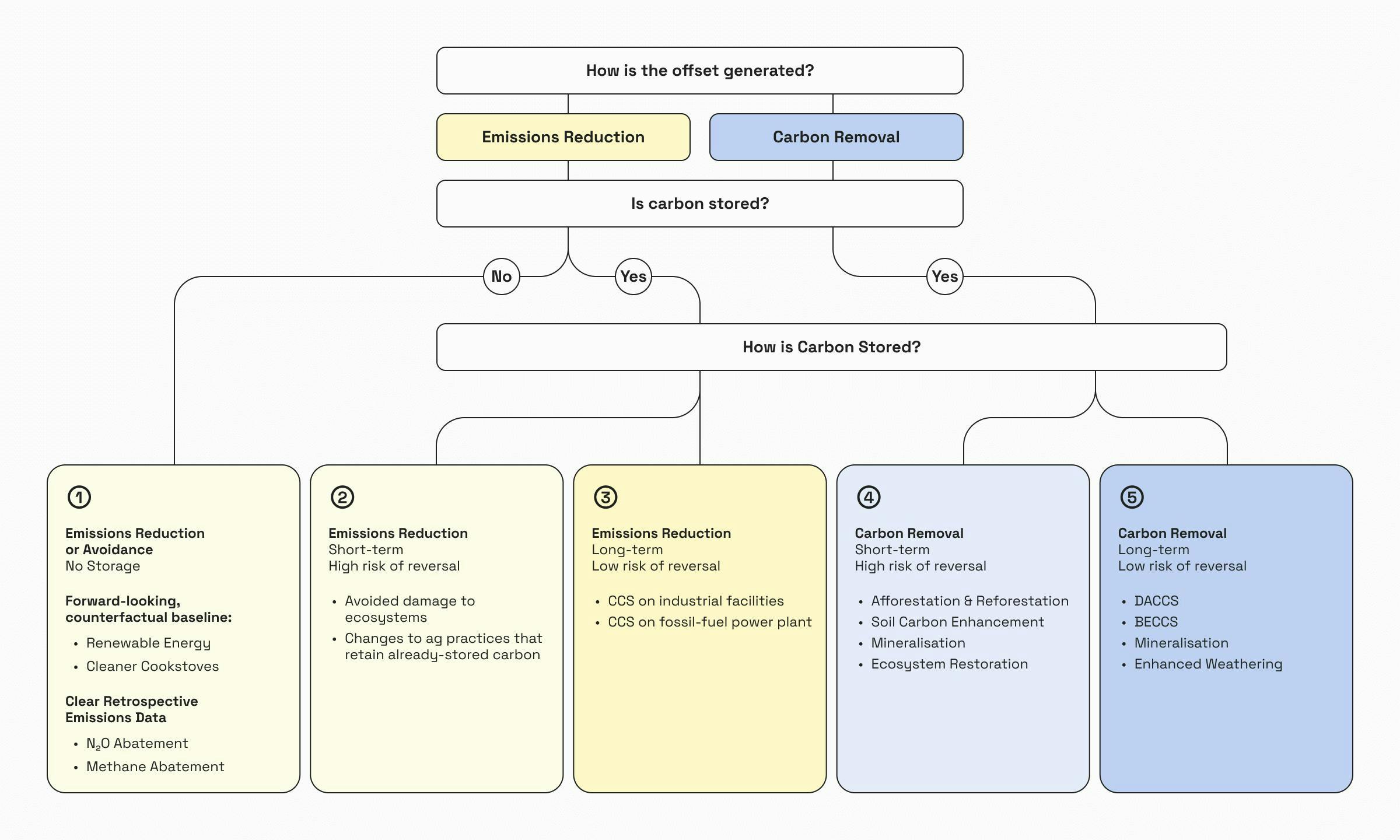
Nature based solutions – forestry
Oceans, soil, plants, forests (of trees, mangroves, seaweed etc), all absorb and store carbon dioxide through natural processes. Protecting, restoring, and managing these ecosystems, therefore, is a crucial way to mitigate climate change – often referred to as ‘nature based solutions’ or ‘natural climate solutions’.
Afforestation and reforestation
Trees naturally absorb and store carbon dioxide via photosynthesis, and so they’re a valuable natural carbon removal mechanism. There are various types of carbon offset projects within forestry – including afforestation and reforestation.
In afforestation projects, brand new forests are planted and grown on land which has historically not been forest e.g. agricultural land or waste land – increasing the amount of carbon naturally removed by trees.
In reforestation projects, land which was previously a forest but is no longer (e.g. the forest was cut down for use in the timber industry, and the land has become degraded) is restored back into a forest through planting and growing new trees – again, increasing the amount of carbon naturally removed by trees.
- Category: Both afforestation and reforestation are within type 4 of the Oxford Offsetting Principles – carbon removal with short-lived storage.
- Example: An example project is Ackron Mixed in Scotland, where degraded agricultural land previously used for sheep grazing has been used to grow a brand new forest of mixed native tree species – removing carbon whilst providing new habitats for local wildlife and offering new income opportunities for agricultural landowners.
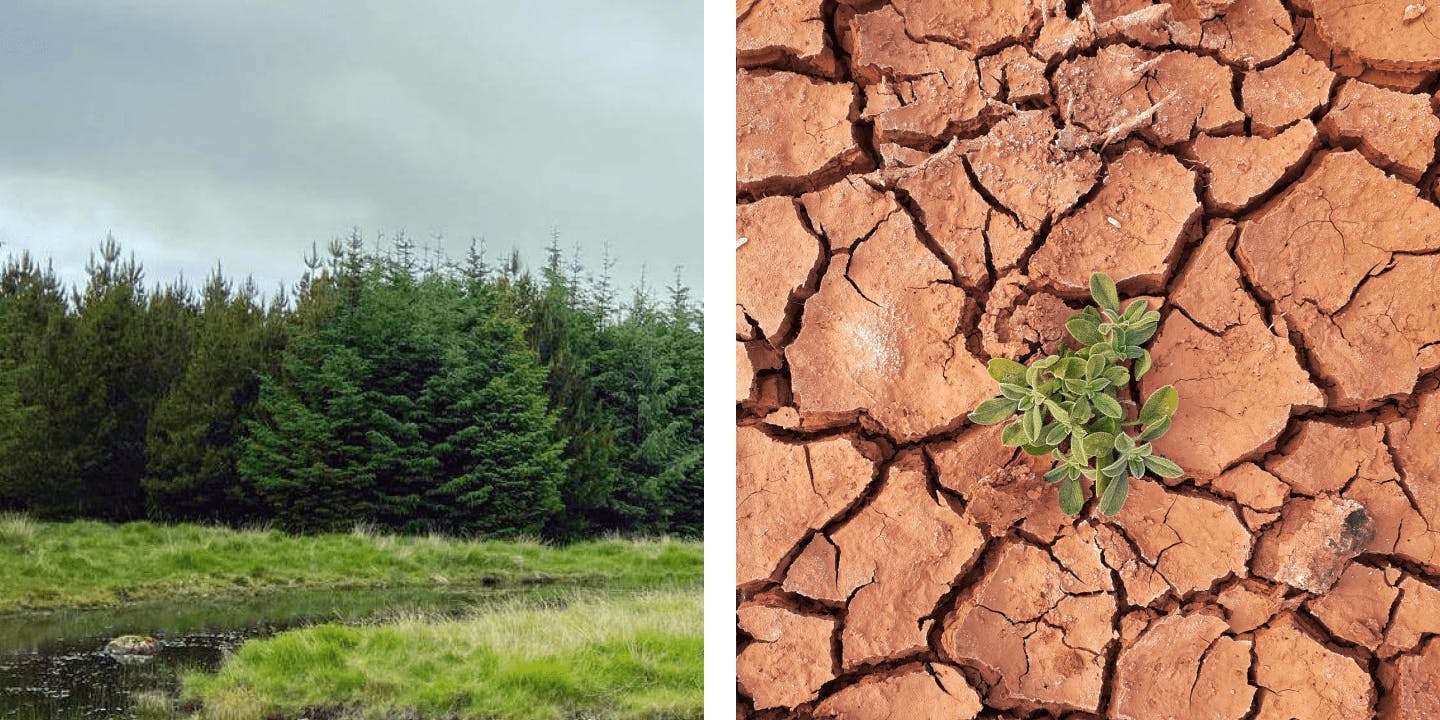
Improved forest management
Planting trees alone isn’t enough to increase carbon removal – which is why it’s important to distinguish between tree planting projects and forestry carbon offset projects. Trees need to reach maturity (at least 10 years old) to maximise their carbon removal and storage potential and young saplings face many risks along the way which means they may not reach maturity, from disease to wildlifes to competing with other trees for soil nutrients.
It takes careful management to ensure forests reach their full potential, so improved forest management projects aim to improve management practices at existing forests in order to result in increased carbon removal and storage by the trees.
- Category: Improved forest management projects are type 4 of the Oxford Offsetting Principles – carbon removal with short-lived storage.
- Example project: the Shaan Seet project in Alaska, where income from the sale of carbon credits funds job training for local students in sustainable forestry practices. There are also innovative, early-stage projects exploring how forest management can be improved using technology, such as Living Carbon which is using biotechnology to enhance photosynthesis, and therefore increase tree growth and carbon removal in reforestation projects.
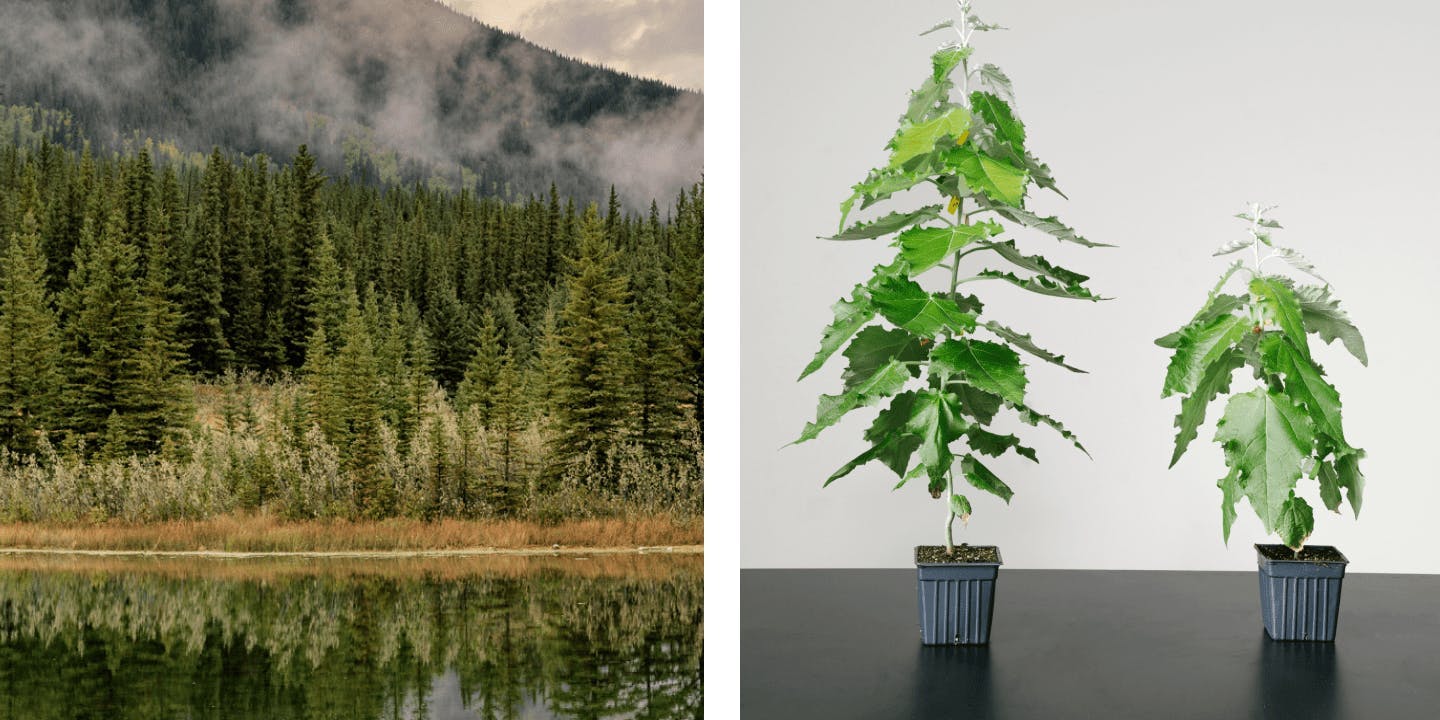
Forest conservation
Trees are a lucrative source of timber and they occupy extensive areas of land which could be used for other high-profit activities such as palm oil plantations – meaning forests are constantly facing the threat of deforestation.
Trees need to reach maturity (10 years+) to reach their carbon removal potential. Plus, when cut down, the valuable carbon storage the trees provide is lost, and some of the carbon dioxide they had absorbed whilst alive is released – causing an increase in emissions in the atmosphere.
So, it’s important that existing forests are protected from deforestation, and that’s where forest conservation projects come in. These projects typically use the sale of carbon credits to financially incentivise forest landowners not to sell the land to those entities wanting to buy it to cut down trees.
- Category: Forest conservation projects are type 2 of the Oxford Offsetting Principles – emissions avoidance with short-lived storage.
- Example project: the Keo Seima Wildlife Sanctuary in Cambodia, where 1,880km² of forest has been protected from illegal logging for timber since 2010 – preserving a vital source of carbon removal and storage, as well as biodiversity. In addition, the sale of carbon credits has also funded new jobs and community projects for the indigenous Bunong people who live in the project area.
For further information on forestry carbon offset projects:

Nature based solutions – other
Beyond forestry, there are many other natural processes and environments that are also constantly absorbing and storing carbon.
Blue carbon
In the same way that trees naturally absorb and store carbon dioxide via photosynthesis, so do other plants, including those in ocean and coastal ecosystems such as seaweeds, salt marshes, and mangroves – collectively known as ‘blue carbon’.
Blue carbon, therefore, provides a valuable source of natural carbon removal and storage, so preserving and restoring existing ecosystems, and growing new ones, can increase carbon removal potential and prevent emissions being released.
Similar to forestry carbon offset projects, blue carbon projects can be across different Oxford Offsetting Principle types:
- Conserving existing ecosystems would be type 2 – emissions avoidance with short-lived storage.
- Restoring or growing new ecosystems would be type 4 – carbon removal with short-lived storage.
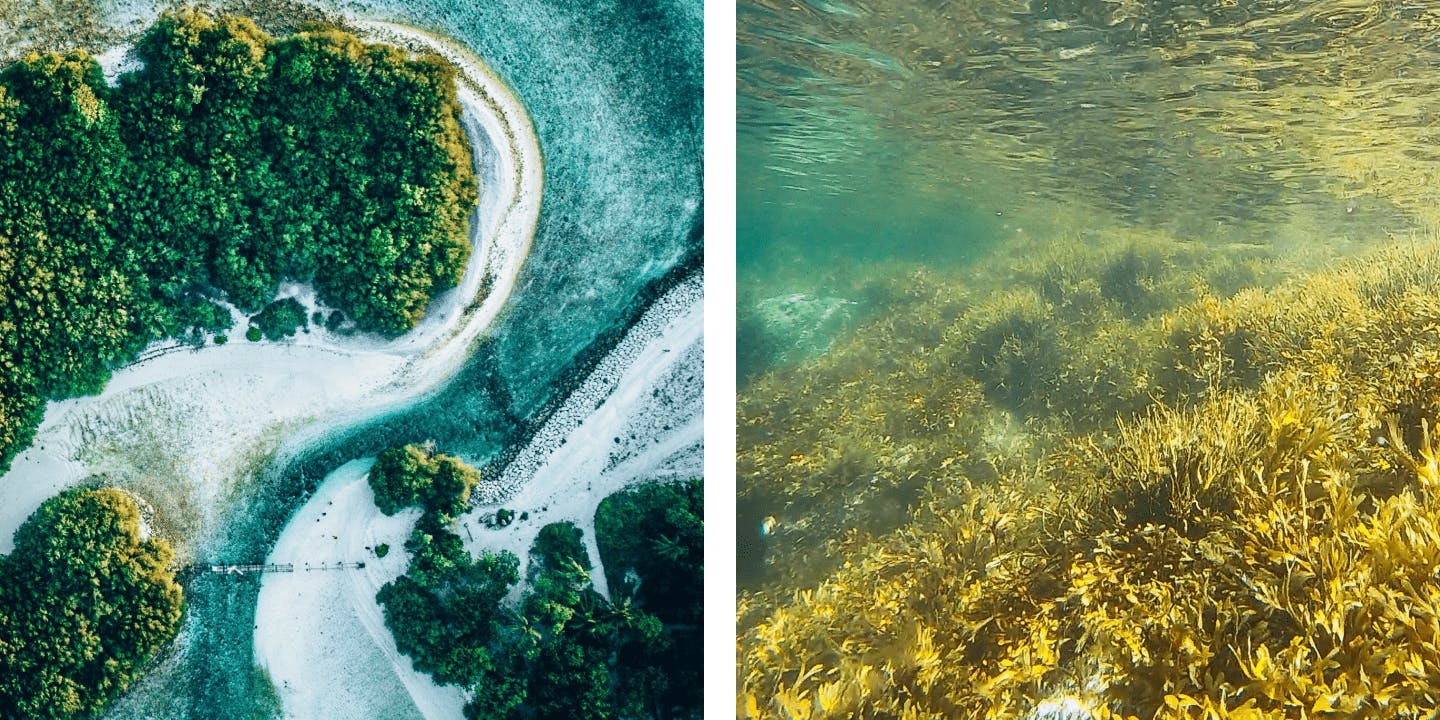
Soil carbon
Soil is another crucial natural carbon sink. Soil is made in part by broken down organic matter, so it safely stores the carbon dioxide that plants have absorbed during their lifetime.
Soil carbon projects preserve and enhance soil carbon sequestration through improving lland management practices to increase soil health, such as reducing tillage intensity, planting cover crops, and improving grazing management.
It’s important to note that soil carbon sequestration is challenging as a carbon offset project type. Soil is a complex ecosystem which is difficult to research, monitor, and gather data on, and there are a myriad of biological ways in which carbon can be lost from soil. For these reasons, it’s difficult to prove the quality and credibility of soil carbon projects – which is why you won’t currently find any projects of this type in the Lune dashboard.
- Category: Soil carbon sequestration projects are type 4 of the Oxford Offsetting Principles – carbon removal with short-lived storage.

Engineered solutions – amplifying natural processes
As we’ve seen, nature is full of processes for removing and storing carbon. As well as nature-based projects which protect these ecosystems and grow new ones, there are also technological methods to enhance and amplify these natural processes for increased carbon removal.
Biochar
Organic plant matter (known as biomass), such as waste wood chips from timber production – decays in a natural environment, it releases the carbon dioxide which it had absorbed and stored whilst alive (via the process of photosynthesis) into the atmosphere.
Turning biomass into biochar prevents the process of decay, meaning the carbon dioxide cannot be released – creating a permanent store for carbon emissions in a solid, charcoal-like form. The biochar is produced heating the biomass at high temperatures in a low oxygen environment, a process known as pyrolysis.
The resulting biochar is nutrient-rich and so can also be applied to soil as a fertiliser where it helps to improve soil health – and increase crop yields if used on agricultural land.
- Category: Biochar projects are type 5 of the Oxford Offsetting Principles – carbon removal with long-lived storage.
- Example project: Pyrocal in Australia, which uses waste from organic feedstock – such as macadamia shells and used pine wood pallets – to create biochar, which is then used as soil fertiliser.
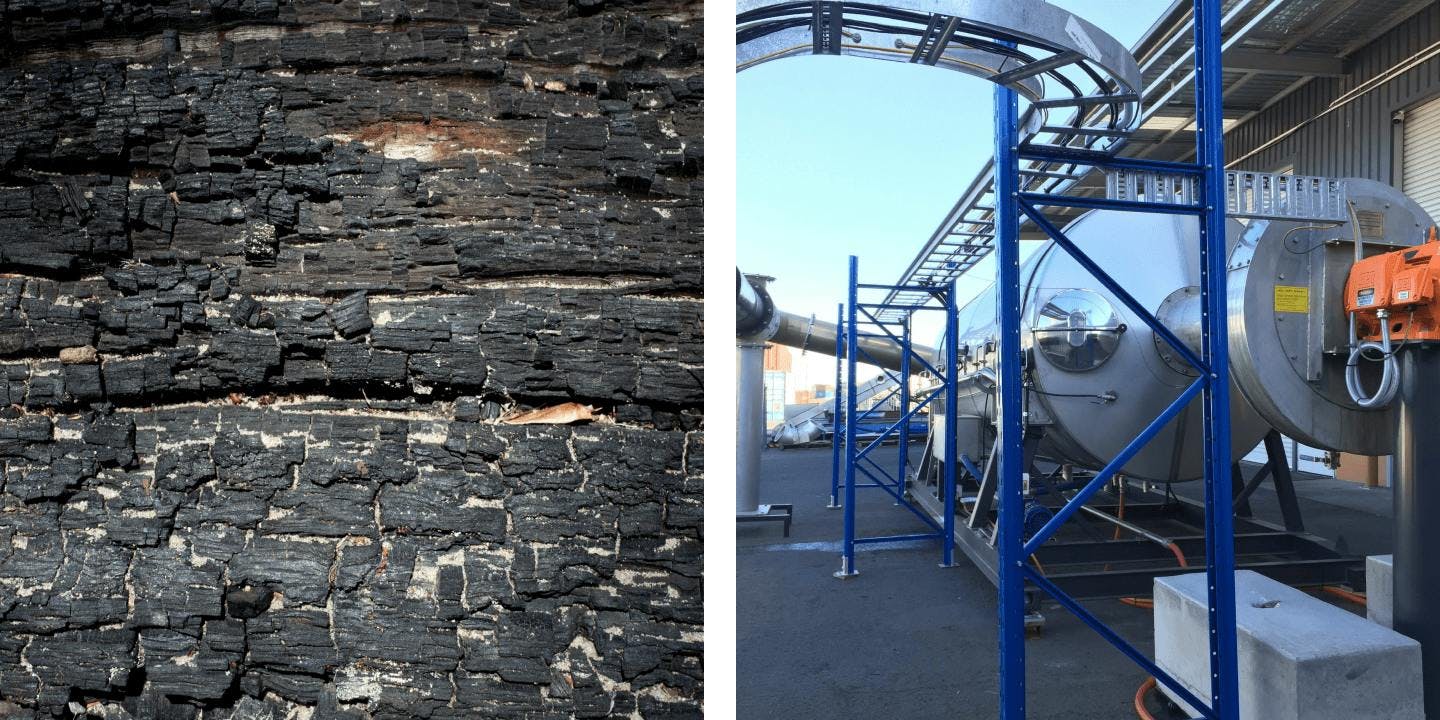
Bio-oil sequestration
If plant matter (biomass) is heated very quickly and at very high temperatures in the absence of oxygen (a process known as pyrolysis), it produces a stable liquid known as bio-oil. The carbon dioxide which the plants had absorbed via photosynethsis whilst alive is then safely locked away in the bio-oil.
Note: this is the same process used to create biochar, but using higher temperatures and a much shorter heating time (‘fast pyrolysis’) to produce a liquid form instead of a solid form.
The bio-oil can then be injected deep underground where it will solidify, creating a permanent geological store for carbon dioxide.
- Category: Bio-oil projects are type 5 of the Oxford Offsetting Principles – carbon removal with long-lived storage.
- Example project: Charm Industrial, a project using waste plant matter from the agricultural industry to produce carbon-rich bio-oil, which is then injected deep underground at injection sites regulated by the Environmental Protection Agency.
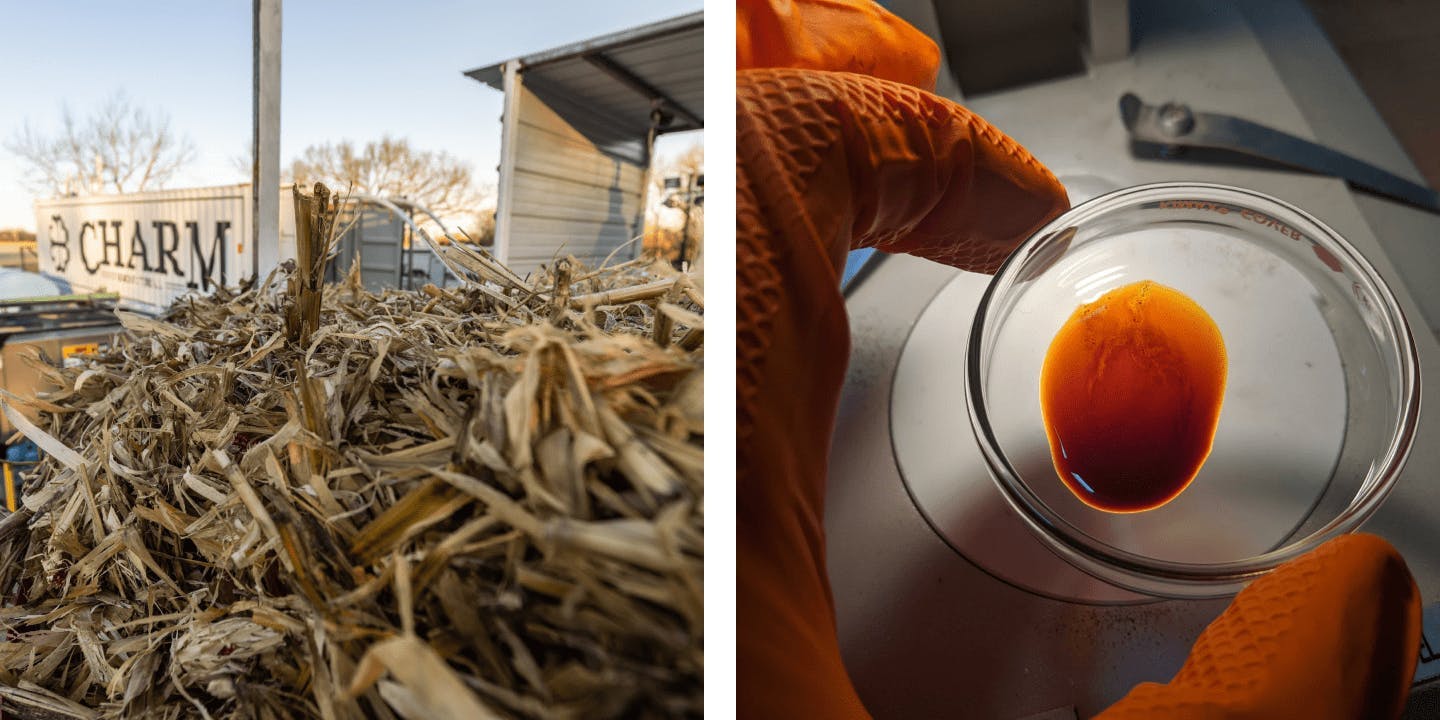
Enhanced weathering
Rock weathering is a natural carbon removal process where carbon dioxide in the atmosphere reacts with rainwater to form carbonic acid, which dissolves (‘weathers’) rock as it falls on the earth’s surface. Minerals in the rocks then react with the carbonic acid to form solid carbonate ions in a process commonly referred to ‘mineralisation’ or ‘carbon mineralisation’ – creating a permanent, solid form for the carbon dioxide. The carbonate then makes its way to the ocean, carried by the rainwater, where it is stored permanently for thousands of years via the slow carbon cycle.
This process naturally takes place over many thousands of years. But, it can be sped up (‘enhanced’) by grinding rock up into fine particles and spreading it (on land or coastal areas) to increase the surface area.
- Category: Enhanced weathering projects are type 5 of the Oxford Offsetting Principles – carbon removal with long-lived storage.
- Example project: UNDO in the UK, where finely ground basalt rock produced as a waste product in the quarrying and mining industries is spread on agricultural land to accelerate natural rock weathering – as well as contributing to soil health and increased crop yields.
Read more in our article: Accelerating natural processes for increased carbon removal – a deep dive on enhanced rock weathering
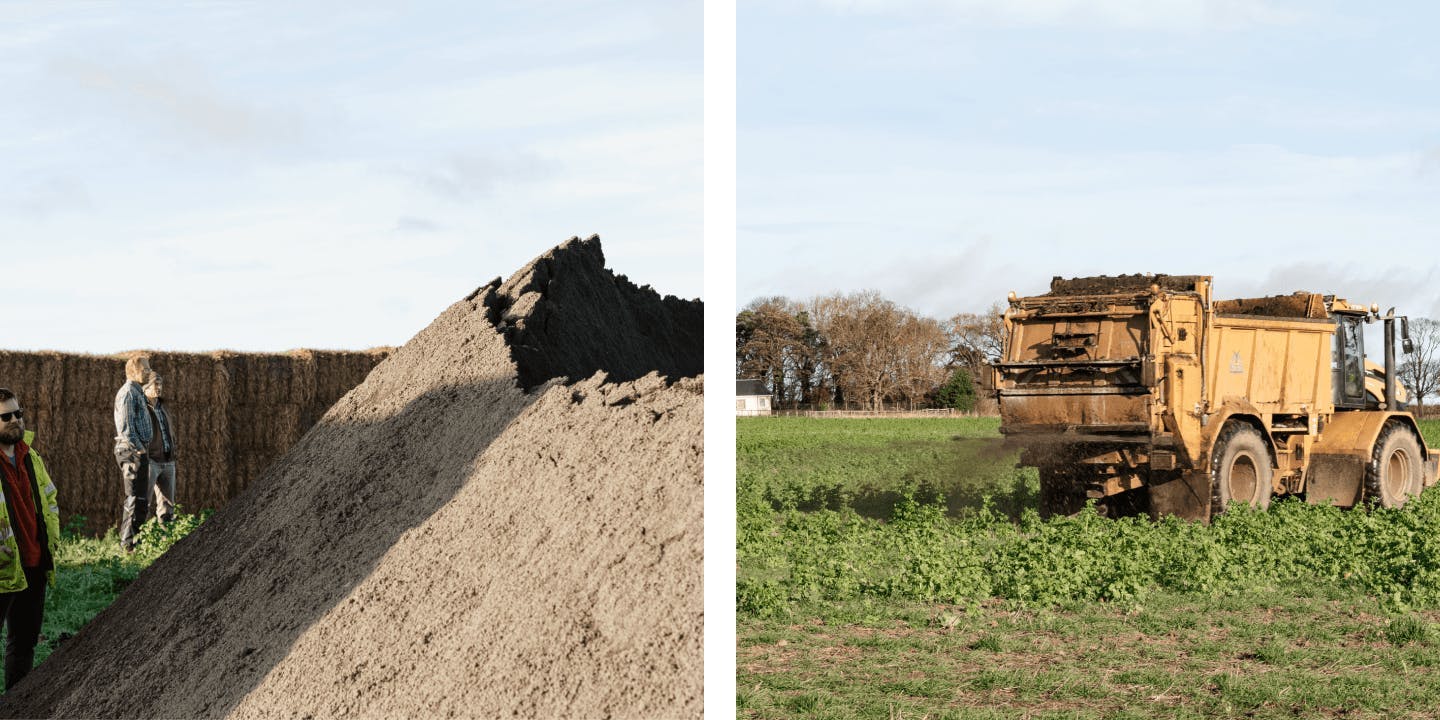
Concrete mineralisation
Concrete is made by combining water, cement, and aggregates like gravel, crushed rock, or sand. Due to minerals found in the cement (it’s typically manufactured through the chemical combination of limestone, silica, alumina, and iron oxide), when carbon dioxide is introduced as an ingredient in mixing concrete, the natural process of carbon mineralisation takes place (see: enhanced weathering) and the carbon dioxide is turned into a solid form, becoming permanently stored in the concrete – which can then be used as a building material as normal.
- Category: Concrete mineralisation projects are type 3 of the Oxford Offsetting Principles – emissions avoidance with long-lived storage.
- Example project: Carbon Cure, a project developing retrofit technology which is being installed in concrete plants across the world to enable carbon emissions to be turned into a stable, solid form in concrete.
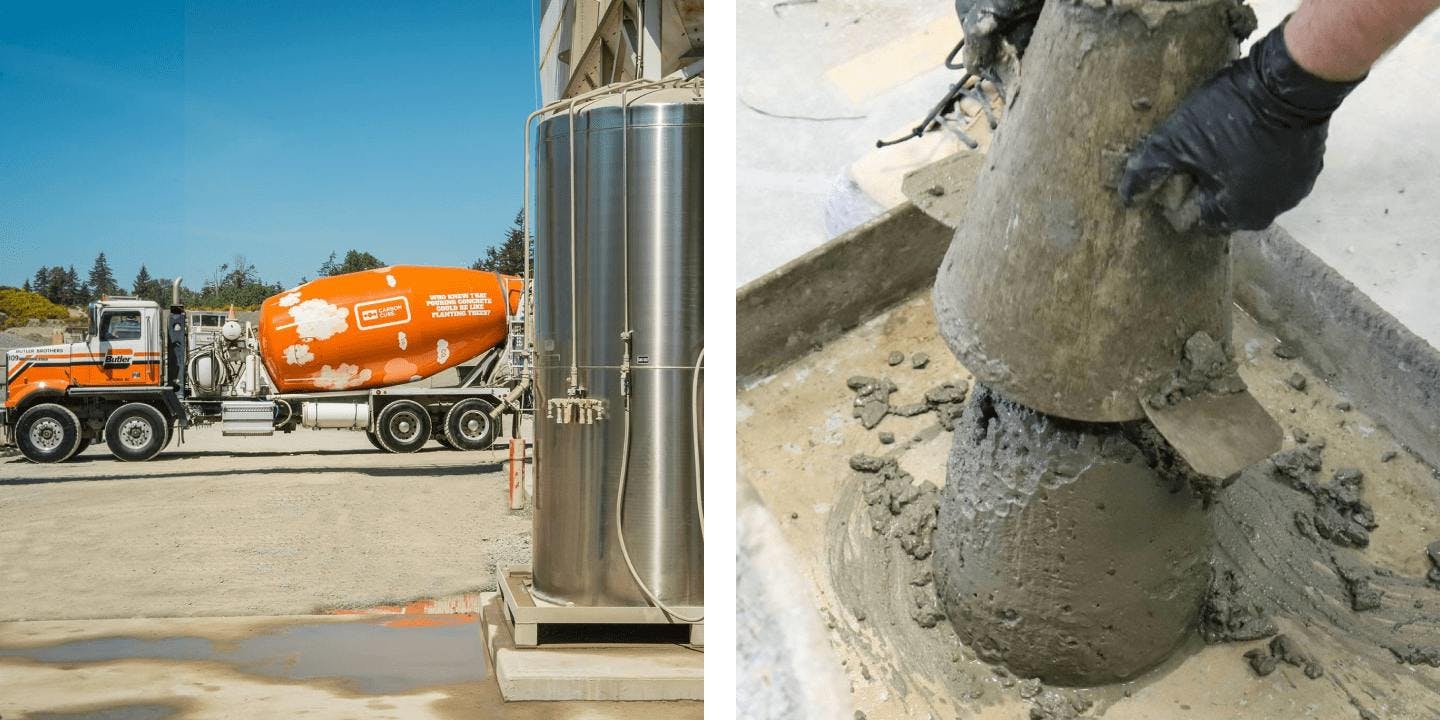
Ocean carbon removal
Oceans cover 70% of the Earth, and they’re constantly removing carbon from the atmosphere via several natural processes, including: photosynthesis by oceanic and coastal plants, use by marine animals, and direct absorption at the surface level of the ocean. These processes bring carbon into the ‘fast carbon cycle’, where it could still be returned to the atmosphere. But, once carbon is transported to the deep ocean (e.g. when marine animals die and sink to the ocean floor) it moves into the ‘slow carbon cycle’ and can be safely stored in the ocean for thousands of years.
Ocean carbon removal projects seek to enhance these natural processes of carbon removal and long-term storage in a variety of ways. Examples include planting terrestrial biomass (e.g kelp) which removes CO2 as it grows and then sinking the biomass to the deep ocean, or oceanic enhanced weathering (see: enhanced weathering) where finely ground rock is deposited in the ocean.
- Category: Ocean carbon removal projects are type 5 of the Oxford Offsetting Principles – carbon removal with long-lived storage.
- Example project: Running Tide’s multi-pathway ocean carbon removal project. They deploy buoys made of waste biomass, seeded with kelp (a fast-growing microalgae that absorbs carbon dioxide as it grows), and coated with limestone (a naturally alkaline substance which helps to combat ocean acidification) into the open ocean. After an optimised period of kelp growth, the whole buoy sinks into the deep ocean where the carbon dioxide can be safely stored for thousands of years.
Read more: Amplifying nature’s climate solution – a deep dive on ocean carbon removal
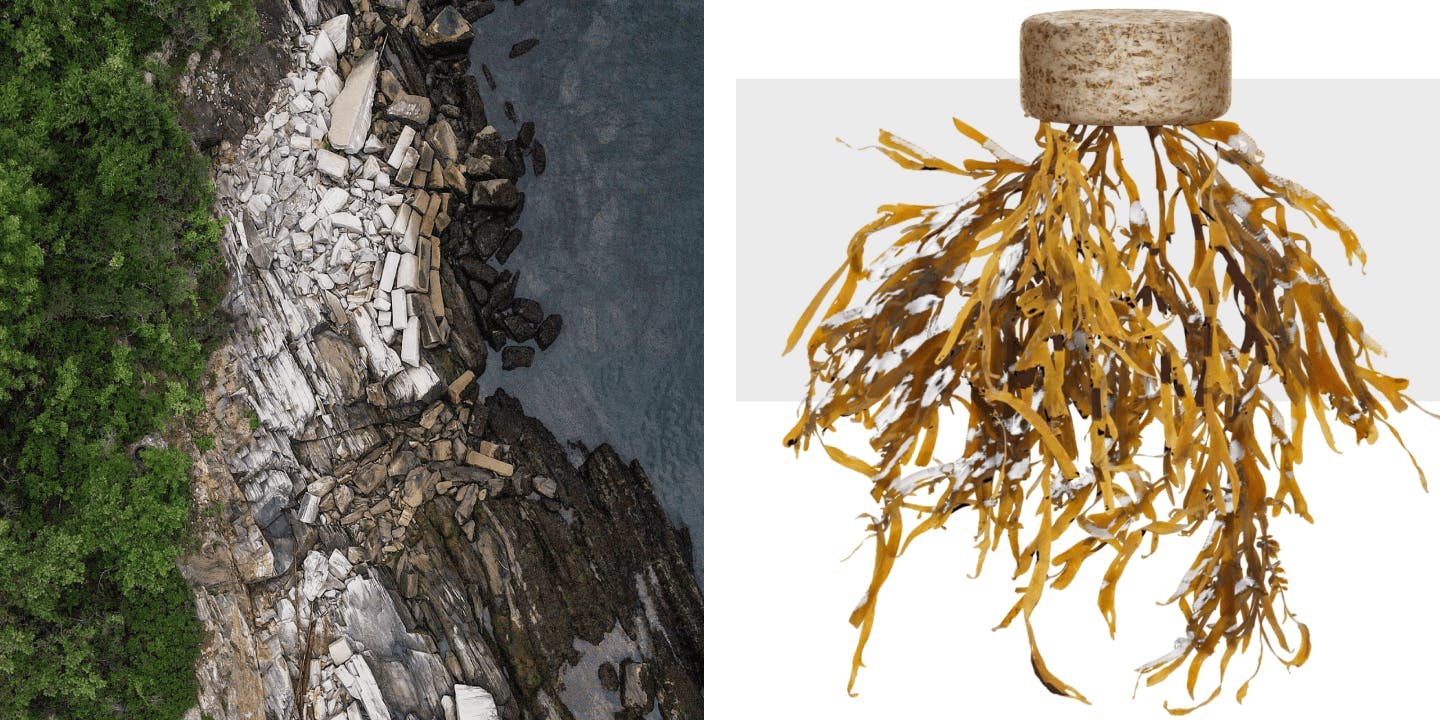
Engineered solutions – technology
Alongside engineered solutions which enhance natural processes of carbon removal, there are also technologies which provide carbon benefits in themselves.
Direct Air Capture
At Direct Air Capture (DAC) plants carbon dioxide is captured straight from the air around us. There are different methods for doing this, and it’s likely that new methods will continue to be developed – it’s an early-stage type of project. Typically, air is drawn into a plant using fans, and then chemical reactions are used to bind with the carbon dioxide in the air, making it possible to separate the carbon dioxide and capture it. The air is then re-released. The captured carbon dioxide can then be stored e.g. by pumping it deep underground where it mineralises into a solid form for permanent storage, or it can be used as a raw material in construction or fuel, for instance.
- Category: Direct Air Capture projects are type 5 of the Oxford Offsetting Principles – carbon removal with long-lived storage.
- Example project: 1PointFive, which is developing the world’s largest Direct Air Capture plant to be operational in 2024, aiming to capture carbon dioxide from the air at scale and then store it safely deep underground.
Read more in our article: How to suck all that carbon we’ve emitted back out of the atmosphere – a deep dive on Direct Air Capture
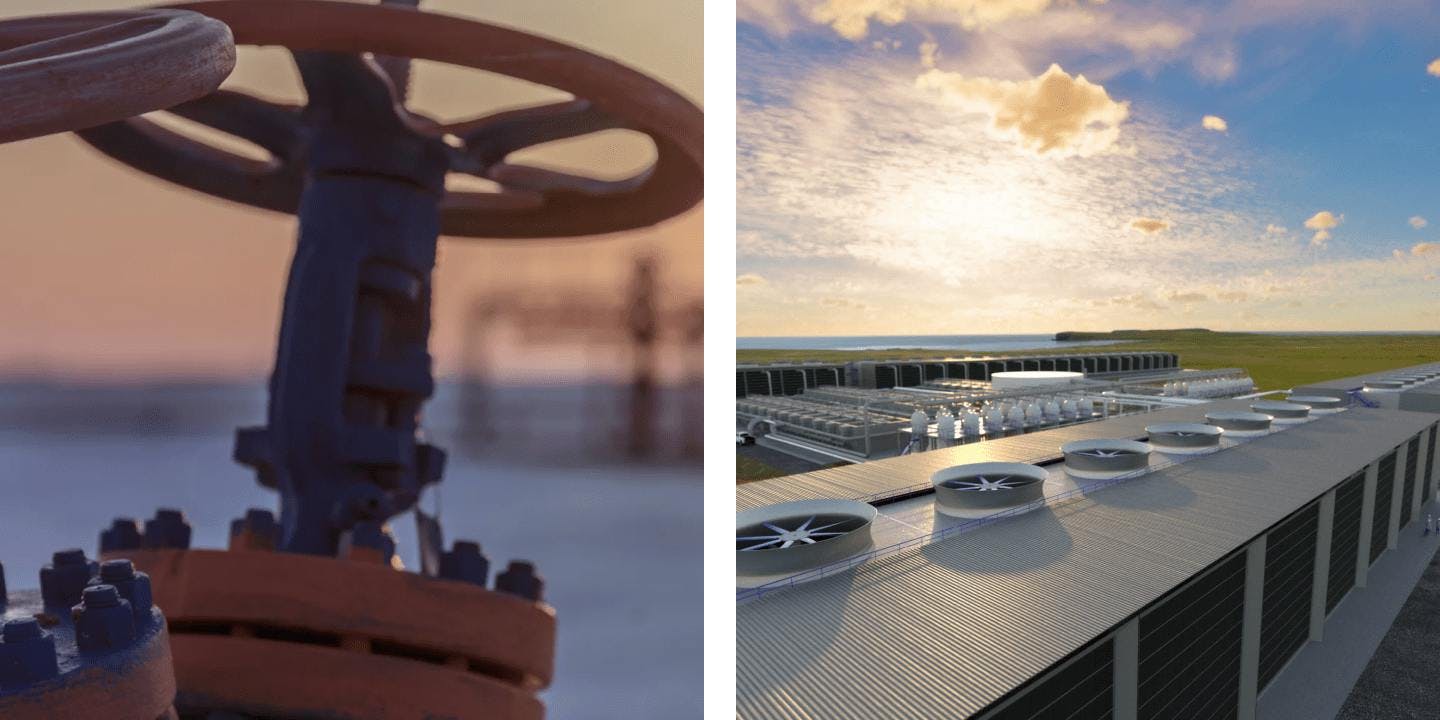
Renewable energy
Constructing renewable energy projects – wind turbine or solar panel farms – in areas that are currently reliant on fossil fuels reduces future carbon emissions by providing a low carbon form of energy.
The technology for developing renewable energy projects is now well-established and relatively low-cost, so carbon credits in these projects are typically the cheapest – but this doesn’t mean you should always default to buying them to offset your emissions. For further reading on this: $500 vs $5 carbon credits – why does cost vary so much in carbon offsetting?
- Category: Renewable energy projects are type 1 of the Oxford Offsetting Principles – emissions avoidance with no carbon storage.
- Example project: the Shandong wind farm in China, a project which constructed and operates 58 wind turbines with a total installed capacity of 49MW electricity.
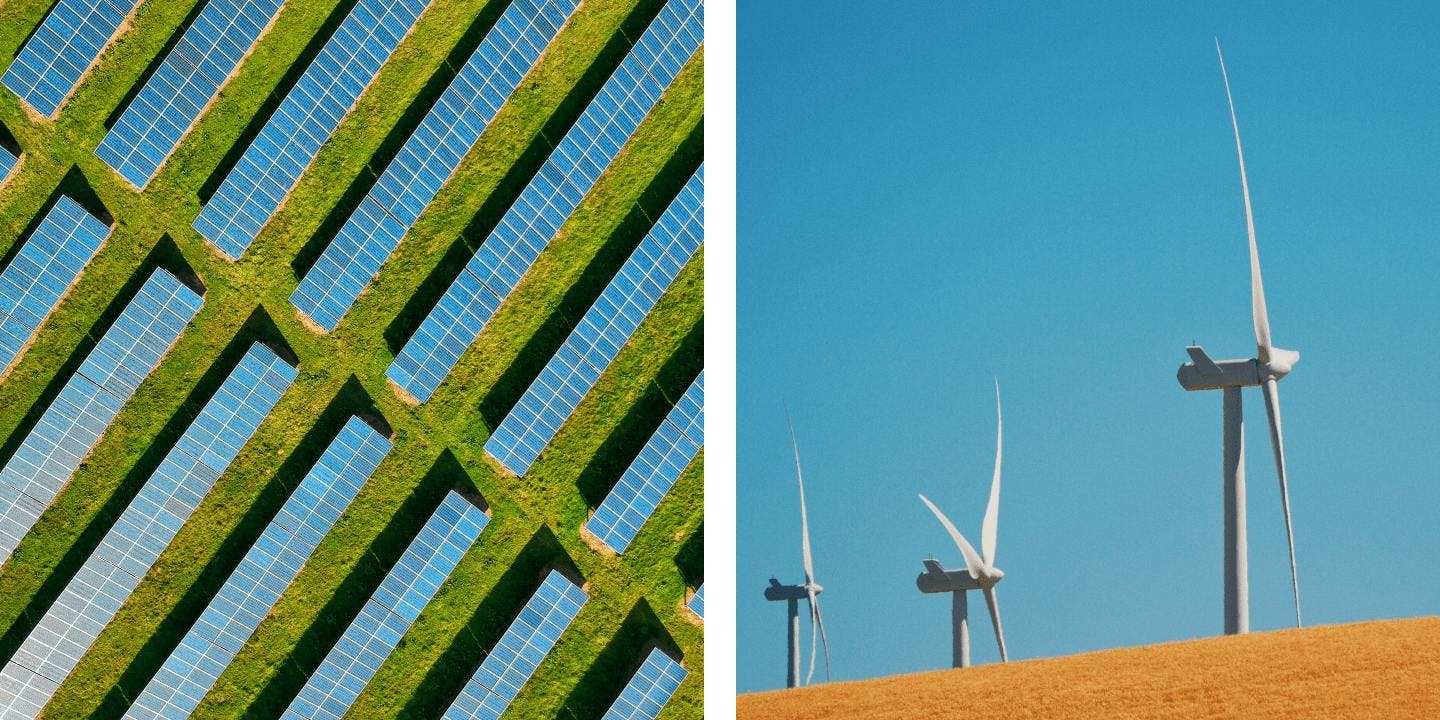
So there you have it – an overview of the different types of carbon projects. If you're interested in learning more, we'd suggest taking a look at our project evaluation guide project evaluation guide: it explains how we source and evaluate carbon projects for our own project library at Lune, focusing on quality and real-world impact.
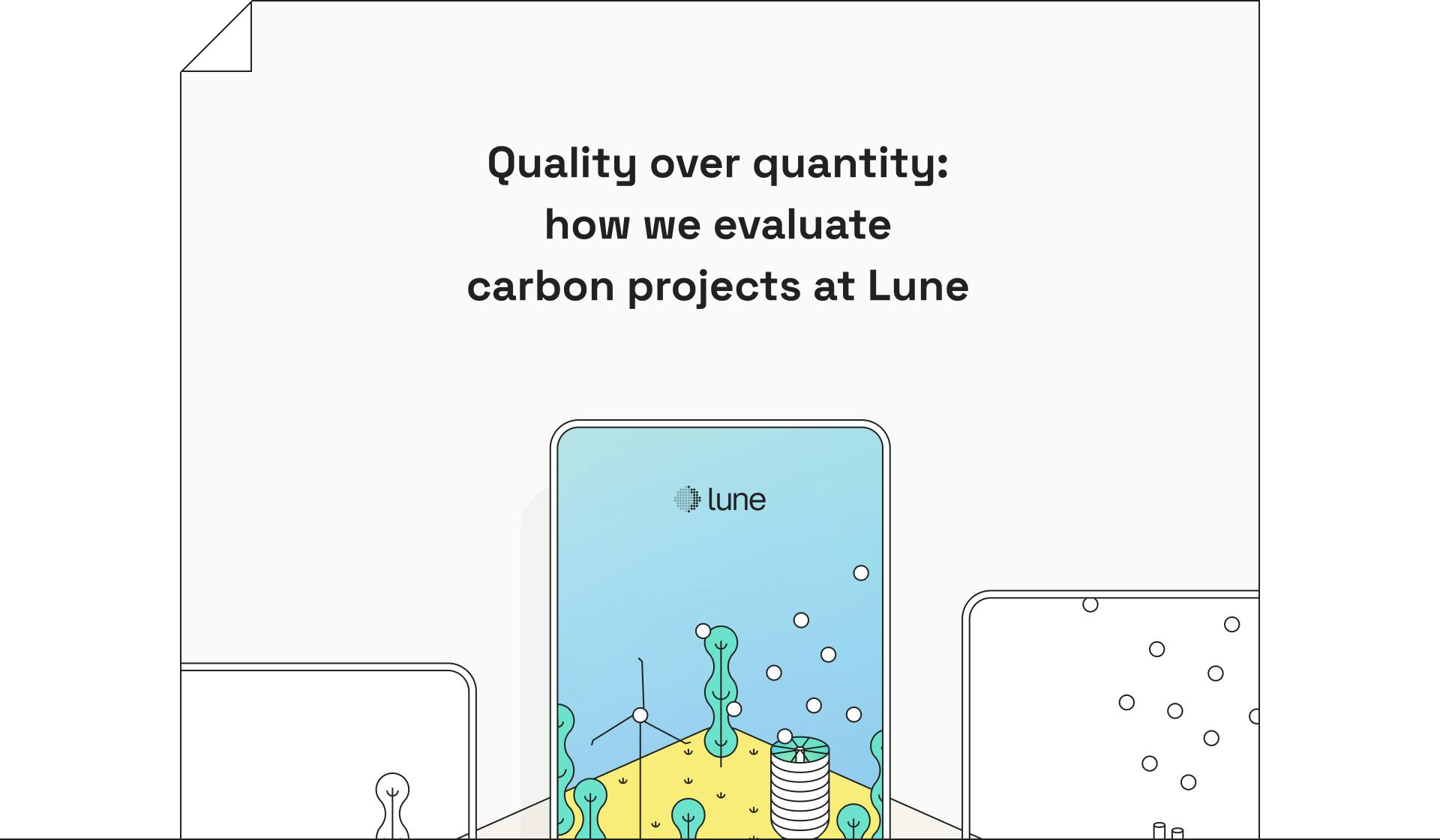
Readers also liked
Readers also liked

Subscribe for emissions intelligence insights
Get the latest updates in the world of carbon tracking, accounting, reporting, and offsetting direct to your inbox.

